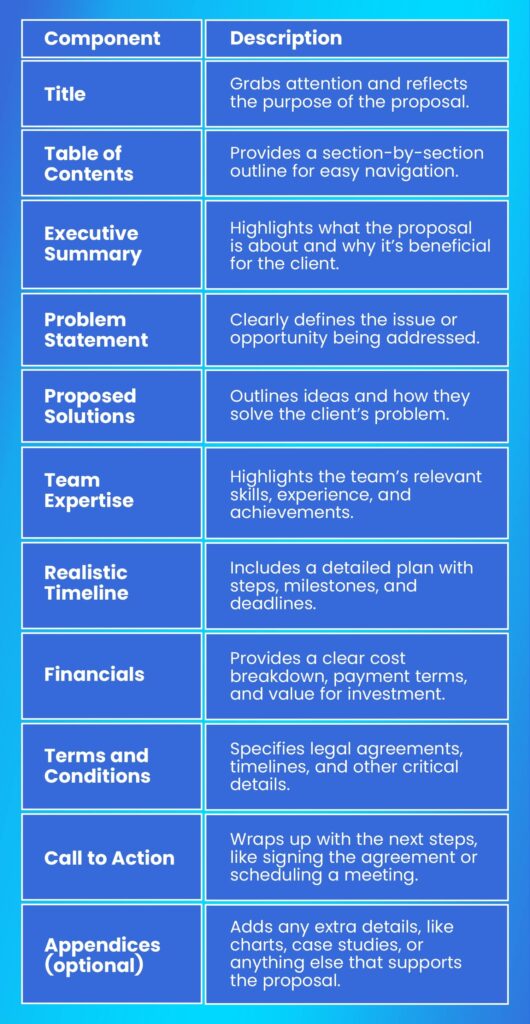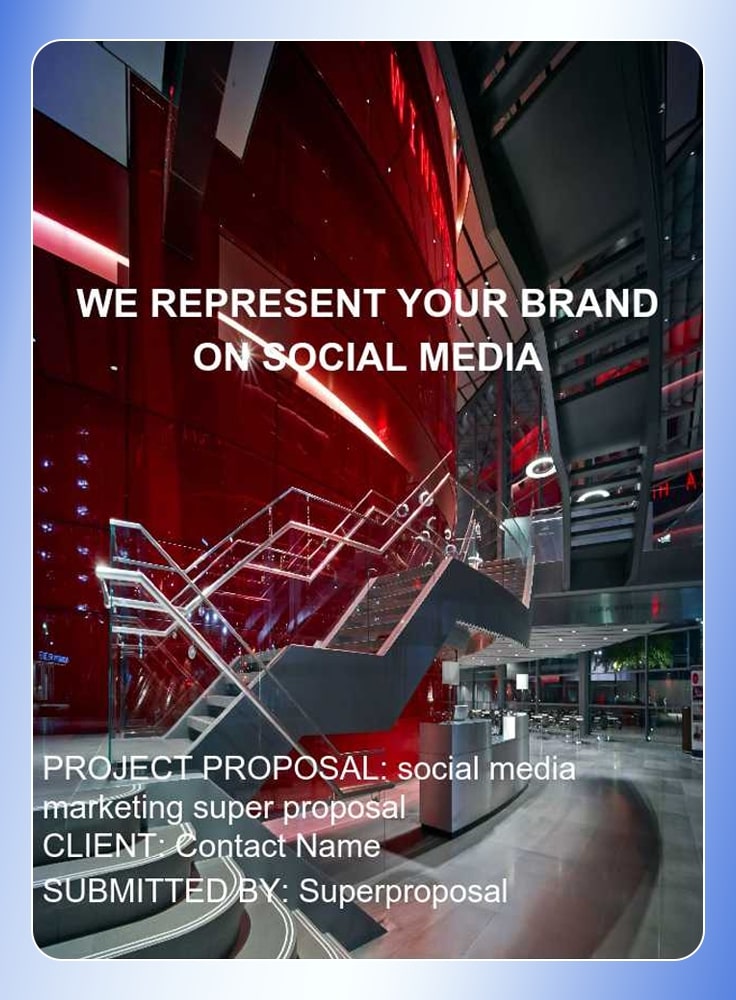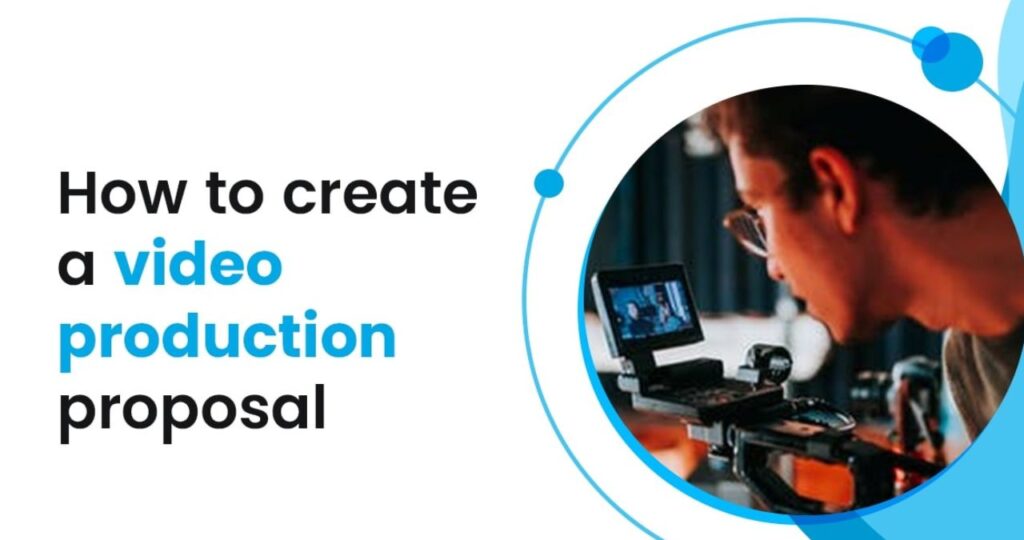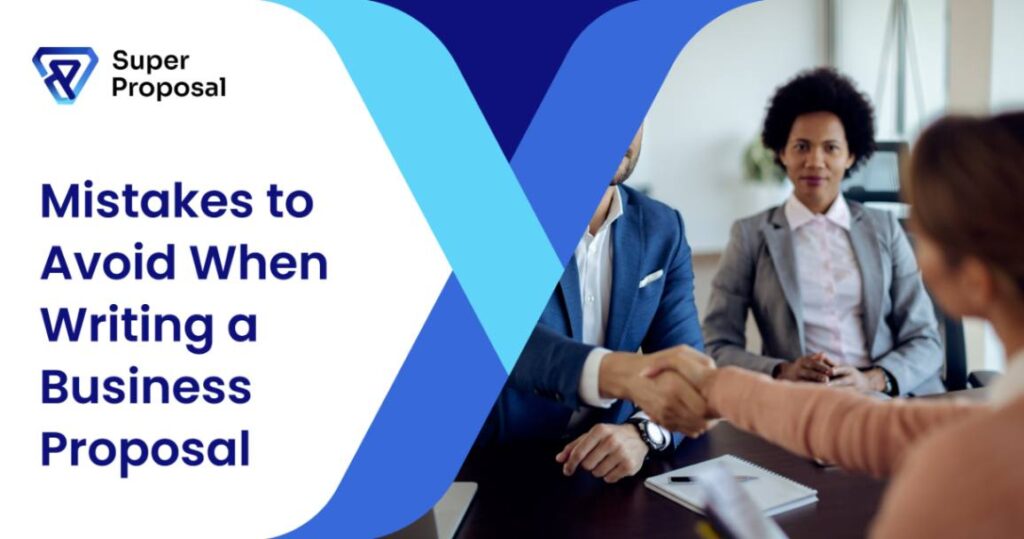How To Write a Business Proposal (With Examples)
MAR 7, 2025 | LAST UPDATED ON MAR 7, 2025 BY ANGELICA NAIDU

Are you searching for clients for your business but don’t know the secret recipe to get them? A well-structured and systematic business proposal will help you land your dream place. From basic details about your business to the benefits of collaboration, the business proposal will cover everything you need for a perfect pitch.
Writing winning proposals takes skill and practice. Understanding the audience, researching their needs, and presenting ideas persuasively are crucial. Focus on the client’s needs and offer solutions to stand out.
The best business proposals are customer-focused. This is the key! This is why generic marketing collateral is not the way to go.
Get a cup of coffee and a notepad, and continue reading to learn everything from best practices and inspiring real-world examples to understanding the essential elements of a business proposal.
Summary
- A business proposal explains your approach to a client’s issue and why you are the most suitable option.
- Business Proposals are widely used in industries like IT, Digital Marketing, Real Estate, Consulting, Construction, Engineering, Healthcare, Education, Energy, and Sustainability.
- Add important components such as the scope of work, executive summary, cost, and qualifications.
- Prioritize the needs of the client and support your position with concise language, facts, and illustrations.
Table of Contents
ToggleWhat is a business proposal?
A business proposal is a written offer of a product or service, typically sent to potential customers. They can also be presented to current customers, such as when a company attempts to upsell an additional product or service.
How you write your proposal can mean the difference between winning and losing a client. A poorly designed proposal complicates the solution, excludes customer details and needs, ignores grammar and style, and prevents you from achieving your company’s objectives.
This is where Super Proposal enters the game. With pre-defined, fully customized templates, you can increase your chances of conversion by 40%.
Following are the important questions you should address in a strong proposal:
- Who are you? What does your business do?
- What issues are your potential clients dealing with?
- What remedy does your business provide to address the issue?
- How will your business successfully put the solution into practice?
- How much money, time, and other resources are needed to put the solution into practice?
- What kind of experience and testimonials do you have?
And finally, the most important question: What makes you stand out in the market from other competitors?
Tip: Before going deep, let’s bust a myth. A business proposal is not the same as a business plan. The internal aspects of your company are the main focus of a business plan. A business proposal is a pitch made to a customer or company.
Types of business proposals
Identifying your client’s businesses and their needs will help you figure out the best type of proposal.
- Unsolicited proposal: When you want to approach potential clients with a proposal—even if they didn’t ask for one—in an attempt to win them over as clients, you use an unsolicited business proposal writing format.
- Solicited business proposal: An official business proposal request is made using a formally solicited business proposal template. You will receive most of the information needed to comprehend the needs of a potential buyer with this kind of proposal.
- Project proposals: Project proposals are used during the bidding process for a particular project.
- Sales Proposals: The purpose of sales proposals is to persuade prospective clients to buy your goods or services.
- Partnership Proposal: Partnership proposals specify each party’s roles and responsibilities as well as the partnership’s advantages for both parties.
Business Proposal Format: Essential Components of a Business Proposal
Even though the format of business proposals can vary, they should all include the following essential components: a title page, a table of contents, an executive summary that explains your company’s motivations, a proposed solution, qualifications, a timeline, pricing, legal information, a clarification of terms and conditions, and an acceptance section where your prospective buyer can sign the document.
If you require more information, think about scheduling a first meeting or phone conversation with your client to learn more about preferences for a potential vendor. Examine the RFP (Request For Proposal) carefully if the company has shared it with you.
The following outlines the essential steps to start writing the proposal.

Cover Letter
The first step in capturing attention is the cover letter, which serves as the introduction to your proposal. It should engage your audience and assure them that your solution addresses their needs, especially in unsolicited proposals. A cover letter doesn’t represent a single product but conveys your business values. It should be concise enough to grab attention yet comprehensive enough to communicate your company’s essence.
Weak Openings:
- Proposing Website Improvements for ABC Corp
- Website Development for ABC Corp
Strong Openings:
- Transforming Digital Presence with Innovative Web Solutions
- Crafting Engaging Web Experiences for the Modern User
Tip: Use clear, positive language to make a lasting impression.
Executive Summary
For your reader, the executive summary functions similarly to a one-to-two-page cover letter in that it provides a succinct overview of your proposal.
An effective executive summary will:
- Present your business, particularly if the proposal is not requested.
- Give a summary of your company’s aims and objectives.
- Give an overview of one or two prior projects that are similar to your area of expertise.
- List your key selling points in brief.
- Outline your company’s future course and emphasize significant turning points.
Describe how your proposal is the first step in that direction. Speaking to decision-makers and prospective clients, you should write in a clear, upbeat, and confident manner that captures the attention of your readers. Include the names of any reputable and well-known companies you have worked with in the past in the summary to help showcase your accomplishments(testimonials give you direct sale). Finish your synopsis by outlining exactly what your audience can anticipate from the proposal’s subsequent sections.
This proposal outlines a plan to offer stylish, sustainable, and affordable fashion.
Mission: Inspire confidence, promote inclusivity, and champion sustainability.
Vision: Be a globally recognized brand for innovation, sustainability, and style.
Goals:
- Short-term: Expand product lines, boost online presence, and achieve 15% monthly sales growth.
- Long-term: Enter international markets and establish retail stores in key fashion hubs.
Table of Contents
The table of contents gives your audience hints about what you are selling and how it will benefit them. Given that the majority of your readers will be C-level executives who will probably skim your proposal, it is important to have well-structured table content.
You can choose to include extra brief summaries of each section in the table of contents in addition to helping readers locate the beginning and ending points of various sections.
Problem Statement
The main content of this section are problem, solution, and qualifications. A compelling problem statement reveals hidden difficulties, shows research, and offers a customized solution. When combined, they make a strong argument for cooperation. Display your knowledge with credentials and prior achievements. Clearly describe any additional capabilities that are required for the project. Your client should have faith in your ability to satisfy customer needs by the end.
Go beyond the RFP’s definition and make sure all important information is included:
- An overview of the company and the history of the project
- Project objectives and necessary services
- Timeline for proposal submission and selection
- Particular proposal components and issues to be resolved
- Budget range estimate
For example, state the problems your customers face while managing social media marketing in a business proposal examples.
Common challenges include:
- Constant Algorithm Changes: Social media platforms frequently update their algorithms, making it difficult for customers to maintain visibility and engagement. Customers may struggle to adapt to these changes, resulting in lower reach and reduced interaction with their audience.
- Content Overload: With numerous platforms and content formats available, customers often feel overwhelmed when trying to create and post consistently. Deciding on the right content strategy and keeping up with trends can be frustrating.
Solutions and Timeline
You have to clearly define the precise deliverables that this proposal will produce after you have described the project’s specifics. Milestones include objectives and specify project phases and checkpoints. Milestones are a component of the project’s overall picture, as opposed to deadlines, which may indicate particular, smaller tasks. Since deliverables are the outcome of reaching a milestone, budget or milestone updates may also have an effect on them.
For example,
- System Setup & Integration: 5 Weeks
- Regulatory Assessment: 2 Weeks
- Findings & Strategy Review: 1 Week
- Execution & Deployment: 3 Weeks (Following Approval)
Tips: Using a Gantt chart or bullet points will help you present your data.
Pricing and budget
List down the expenses related to the solution you have in mind. Be open and honest and give a thorough explanation of all costs. Offer various packages or pricing options to accommodate varying budgets.
For example,
We offer flexible pricing options:
- Basic Package: $3,000 – Account setup, content planning, and basic analytics.
- Standard Package: $5,000 – Includes Basic plus content creation, scheduling, and engagement tracking.
- Premium Package: Custom Pricing – Advanced strategy, ad management, influencer collaborations, and ongoing optimization.
CTA
Emphasize the particular advantages your client will experience by selecting your company. Whenever possible, quantify the value you provide and describe how your solution will assist them in reaching their objectives.
Business Proposal Examples
Social Media Marketing Proposal
With social network advertising expected to reach $82.23 billion by 2025, it’s in your company’s best interest to develop a strategy for increasing your client’s social media presence. To help you sell your social media services effectively, this social media marketing proposal includes:
An executive summary will help you introduce your high-level ideas.
A review of the client’s business to demonstrate your diligence.
A billing breakdown that shows how much your company charges for posting, content creation, and analytics.

Investment Proposal
To establish credibility, an investment proposal describes the company’s history, goals, and
objectives. It incorporates market research to highlight expansion prospects in addition to thorough financial projections. In essence, you’re attempting to persuade possible investors that their funds would be wisely spent.
An executive summary to outline key investment opportunities and strategies.
A market analysis to showcase trends, risks, and potential returns.
A financial breakdown detailing investment amounts, expected ROI, and management fees.

IT Consulting Proposal
The business lays out a thorough plan to meet the technological needs of its client in this template for an IT consulting proposal. As you turn the pages, you will discover:
The proposal’s structure is described in the table of contents.
Clearly defined goals and objectives that guarantee everyone is in agreement.
client’s particular IT requirements.
suggestions made by the company to meet those needs.

Steps For Writing A Business Proposal
You can use these steps to write a well-organized and convincing business proposal for any kind of venture you’re launching:
- Identify your target audience: Recognize your target client’s needs, difficulties, and preferences. Adapt your offer to their particular interests and problems.
- Gather relevant information: Investigate your target client and their sector in depth. Utilize client information to enhance the proposal and make sure it is extremely pertinent.
- Structure and format: Put your proposal in a logical and understandable order. To make it easier to read, use bullet points, subheadings, and headings. Adapt the format to your goal and target audience.
- Write an engaging executive summary: Write a short and concise, captivating executive summary that highlights the main ideas in your proposal. The reader’s attention must be captured in this section.
- Develop a detailed problem statement: Clearly state the difficulty or issue that your client is dealing with. Give facts and figures to back up your assertions and show that you comprehend their predicament.
- Provide a solution and a strategy for putting it into action: Give a thorough explanation of your solution and how it solves the issue you’ve identified. Give a detailed implementation plan that includes deadlines and deliverables.
- Emphasize the advantages and worth: Highlight the particular advantages that your client will experience from collaborating with you. Whenever feasible, quantify the value and describe how your solution fits with their objectives.
- Pricing and budget: Give a clear and thorough explanation of the expenses related to your solution. If appropriate, provide a range of pricing options.
- Include case studies or testimonials
- Provide case studies: Illustrate the effectiveness of your solutions or endorsements from past customers. This gives your proposal more legitimacy.
- Edit and proofread: Make sure your proposal is free of spelling, grammar, and formatting mistakes. Make sure the wording is professional, clear, and succinct.
Pro Tip: Attaching detailed case studies of your work is an excellent way to build trust with a potential client by demonstrating how you’ve solved similar problems for previous clients.
Best Practices for Writing a Winning Proposal
Keep it short, clear, and visually appealing. Unless your product is very complex, don’t write more than six to ten pages. Be careful not to overwhelm potential customers with unnecessary information, even though you must provide all the pertinent information they will require to make a choice.
- Outline Your Proposal: Ensure it covers all key elements while keeping the message clear and structured.
- Stay On-Brand: Customize content and design to reflect your company’s identity and stand out from competitors.
- Refine Your Content: Keep it concise, direct, and professional—checking for clarity, grammar, and flow.
- Use Visuals & Data: Graphics capture attention, while data strengthens credibility and engagement.
- Incorporate Video: Enhance understanding with personalized video elements for key sections.
- Showcase Testimonials: Highlight customer success stories to build trust and credibility.
- Make It Actionable: Include a clear call to action, contact details, and e-signatures for a seamless process.
- Proofread Thoroughly: Check for grammar, spelling, and formatting errors.
Best Practices for Business Proposal Design and Writing
With the correct layout and design, you can turn your proposal writing format into an engaging document. The majority of proposals use the structure mentioned above to highlight their value. Making sure your business proposal example is aesthetically pleasing will make it easier for you to convey your ideas. This may be an unwritten rule while making your proposal but a lot of clients are starting to expect it, and your competitors are doing it as well.
About 80% of proposals had an image, and 20% had a video, according to a research. The use of these multimedia tools resulted in higher close rates than their non-use. Business proposals with bullet points, graphs, charts, and images are much easier to read than those with pages of blocky text. Provide visual aids that clearly and simply summarize the information about operational processes rather than using extremely technical language and leaving stakeholders to figure it out on their own.
Your proposal gives your client an idea of the caliber of work that your company is capable of producing. You are not likely to close the deal if it is sloppy or full of typos, spelling, and grammar mistakes. Read it again and again (Multiple proofreading), before sending it to potential clients or saving it as a template, make sure to check each passage for mistakes.
Tip: By identifying customer pain points and conducting market research, you can create a customized solution that meets the needs of each buyer.
Business Proposal Presentation Tips
Business proposals are important for business that want to grow. This document can assist you with everything from obtaining funding to growing an existing project, regardless of whether you are an established small business pitching clients or creating a business proposal for investors to help you grow.
A business proposal serves the following purposes:
- Record practical plans and forecasts.
- Bring in new customers and business
- Attract investors to provide funds.
- Describe extra growth-oriented structure.
- Determine the advantages and disadvantages of your current business plan.
- Display updated pricing schemes along with other pertinent data.
Business Proposal Follow-Up Tips
Alright, so let’s assume that you have already submitted your proposal. If the client doesn’t respond, what happens next? We are aware that many of you have experienced the same thing. The following is what you can do.
Don’t be afraid to follow up politely after sending your proposal. It’s a cordial reminder that demonstrates your dedication. “Just wanted to check if you had a chance to review our proposal,” is a courteous email or phone call that can make a big difference.
The opportunity to answer any questions or concerns the client may have is excellent during the follow-up. “I am available for more details or to answer any questions you might have” is a good way to make it easier for them to decide.
Three follow-ups strike the right balance—too many risk overwhelming clients.
- First: A gentle nudge after a few days.
- Second: A check-in a week or two later.
- Third: A final reminder, keeping the door open for future opportunities.
No response after three follow-ups? Step back. They may return when the time is right.
Follow-ups spaced too closely seem pushy, while long gaps risk being forgotten. Super Proposal’s real-time tracking shows when clients view your proposal, so you follow up at the perfect moment.
Conclusion
Your proposal, which serves as your initial point of contact with clients, should demonstrate your professionalism, attention to detail, and understanding of their needs. A compelling proposal writing format can open the door to a successful partnership. Among the tools and resources you can use to expedite the process, save time, and increase your chances of landing valuable prospects are proposal software and templates.
The ability to write a compelling business proposal can help your company grow, attract new clients, and create opportunities. Make a good first impression, and your company will prosper.
What are you waiting for now? Let Super Proposal handle the rest, making proposal tracking and closing deals seamless.
Read more: Technical Proposal: Format and Examples
FAQs
How to Write a Business Proposal Sample?
A business proposal sample should include key sections like a cover page, introduction letter, company details, problem statement, proposed solution, and pricing. Tailoring these elements to your specific business needs will help create a compelling proposal.
Where I can find a sample Business proposal template in PDF?
You can find samples of written business proposals in PDF format on platforms like Super Proposal, which offers customizable templates. These templates can be tailored to fit your business branding and specific project requirements.
How to Write a Business Proposal for a Small Business?
When writing a proposal for a small business, focus on highlighting your unique selling proposition (USP) and how it addresses the client’s specific needs.
How to Write a Business Proposal for Funding?
A funding proposal writing format should emphasize financial projections, market potential, and return on investment to convince investors. Including a detailed business plan and financial statements will provide the necessary support for your funding request.
What is the best format for a business proposal?
For your proposal, the best way to format it is to make it more skimmable and readable. You can use the following format:
- Title or cover page
- Table of Contents
- Executive Summary
- Problem Statement with Engagement Letter
- Solution
- Timeline
- Pricing
- Terms and Conditions
- Action
What are the 3 C's of fundraising?
The 3 C’s of fundraising are competition, creativity, and consistency. Employing these three in your fundraising proposal will exponentially increase its chances of approval or success.
Increase your close rates today!
Secure every pitch that you make with Super Proposal. Craft winning proposals, share and track them on a single, comprehensive platform.
✓ 15-Day Trial. No Credit Card Required.

Recent Post



